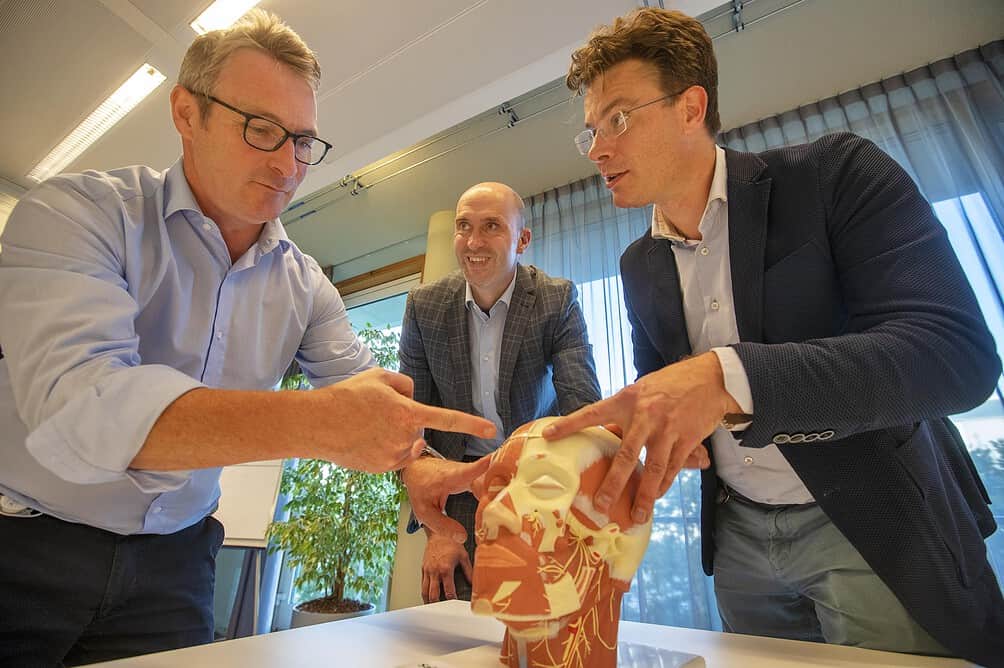
A bioelectronic foil implant has given a 29-year-old woman from Australia immediate relief from her severe migraine symptoms. Her two sons are so grateful that they named their new fish Salvia – after the company that supplied the implant.
- One in seven people suffer from migraines.
- Salvia implanted a foil in a migraine patient for the first time to relieve symptoms.
- The result provides confidence for the future of this technology.
For Salvia BioElectronics, based at the High Tech Campus in Eindhoven, the implantation was a big success in the fight against migraine and cluster headache attacks. Not before have these paper-thin bioelectronic films been used against severe headaches. “An extraordinary milestone, ushering in a new era of possibilities in medical care,” said CEO Hubert Martens.

Salvia BioElectronics was founded in 2017 by international experts in the field of neuromodulation. Since then, the team has been building an effective, safe, and accessible neuromodulation method to combat chronic migraine.
Migraines affect one in seven people, mostly women. More than five percent of people with migraines suffer from chronic migraines, with an average of 22 headache days per month. Despite currently approved medical methods, patients with chronic migraine find little relief.
“We are restoring the balance in the brain.”
Wim Pollet, Chief Medical Officer of Salvia BioElectronics
Bioelectronic foils
Salvia BioElectronics was founded to give people with severe migraines their lives back. The company is developing bioelectronic foils that can adapt to the anatomy of the head, offering a promising solution for neuromodulation. “We restore balance to the brain,” said Wim Pollet, Chief Medical Officer of Salvia. “Migraines and cluster headaches are characterized by hypersensitivity of the nervous system. Our solution aims to restore the balance of the nervous system by delivering gentle, electrical stimuli through a paper-thin film to reduce attacks of migraine and cluster headaches.”


